CS is now more than 20 years old and has suffered through many ups and downs. Recency bias often prevents us from objectively assessing the state of something, and as such, we decided to zoom out and gather comprehensive data on CS:GO's health and growth throughout the years since its release in August 2012. In this article, we try to answer the question: "What is the current State of CSGO"
CSGO Playerbase Metrics

In the past 18 months, CSGO has experienced the 10 highest player peaks in the game's history with April 2020 pulling in a 1.3 million player peak! Similar success was reciprocated this year with a player peak in March of 1.19 Million players. Whilst these numbers are heavily influenced by lockdowns happening across the world, during this time CSGO has to compete with a huge range of entertainment options open to people within gaming, such as Valorant, Rainbow Six Siege and Call of Duty, and outside of gaming, such as Movies, Books and TV Shows. CSGO being able to convince 1.3 million people to play CSGO over all other entertainment products is a great sign for the game's health.
Looking at the Peak Players we see the playerbase grow from 277,192 in August 2014 to 819,902 in August 2015! After this period of rapid growth, we see new peaks in December 2015 and April 2016 maxing out at 850,485, after which CSGO begins a long plateau. We see the player peaks slowly go down with each peak being shorter than the last, it isn’t until February 2020 that we reached a higher peak than the previous record set in April 2016, almost 4 years prior. While it didn’t grow much during those four years, it has been able to retain a large amount of its audience and keep a consistent playerbase. Once the pandemic arrived and everyone was forced inside it was able to capitalize on this influx of players, showing it has the potential to draw large amounts of players in the future.
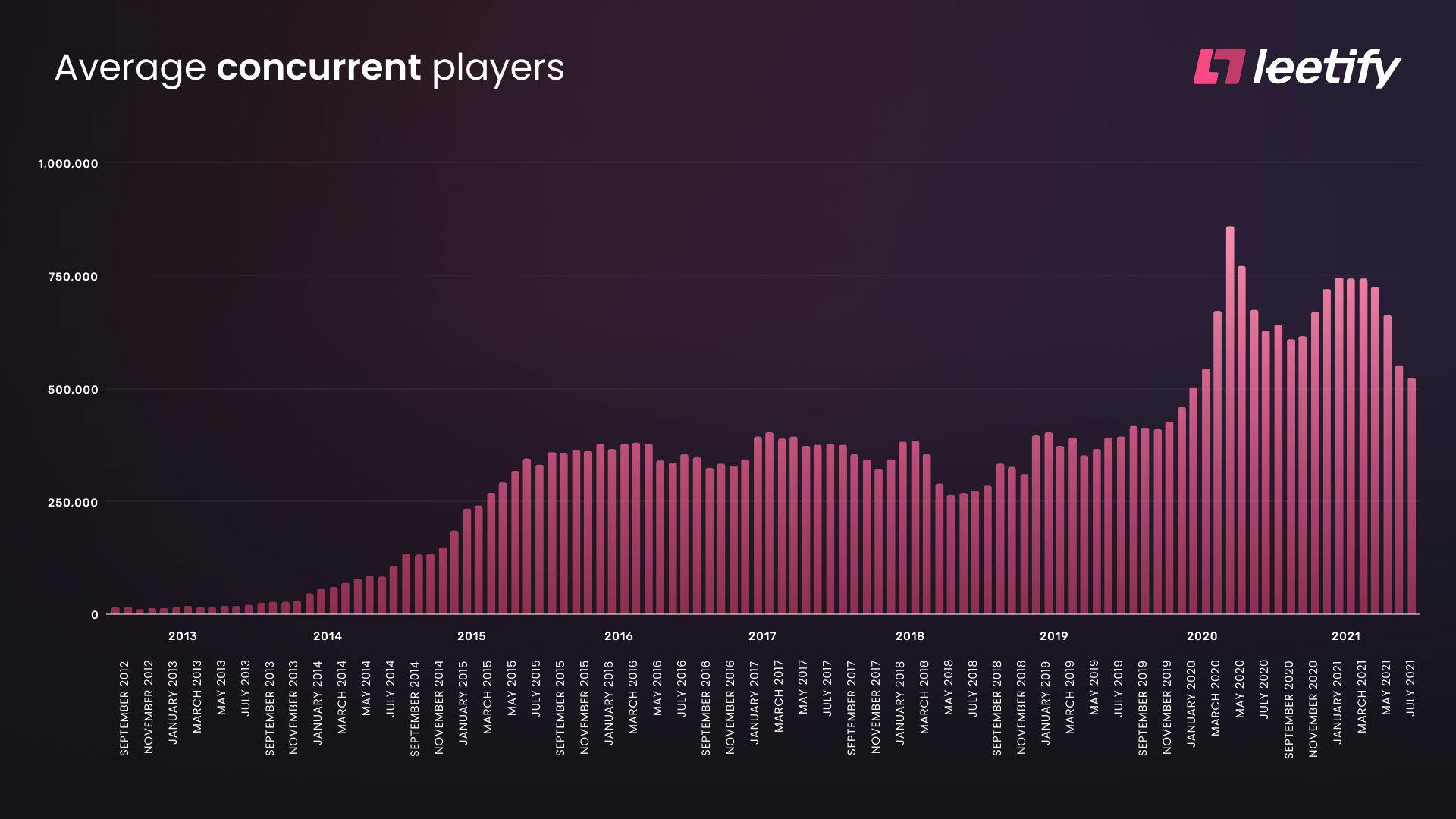
During the past three months, CSGO has seen a rapid drop off from a high plateau of 700,000+ average concurrent players over 5 months, a great achievement for CSGO. This drop of almost 200,000 players is likely due to three main factors, summer beginning, the easing of lockdowns and Valve's recent changes to prime matchmaking. Valve has taken CSGO back behind a paywall to stop “bad actors” affecting the player experience. The community seems very divided on this update with some praising Valve's action to clean up matchmaking from cheaters whilst some users quit the game due to the new Unranked section of CSGO being an awful experience. Now that non-prime accounts cannot get any in-game drops, a lot of bot users who were used to farm skins are now ineffective, which will have an impact on the average concurrent players.
We can never know what Valve’s methodology is, however, by looking at the results we can often find a logical theory. By reintroducing a paywall into the game Valve is improving the quality of the paid player experience, prioritizing this over the free player experience. While in the short term this will cause a significant reduction in players, in the long term this strategy should lead to a much better player experience which should help attract new players to CSGO.
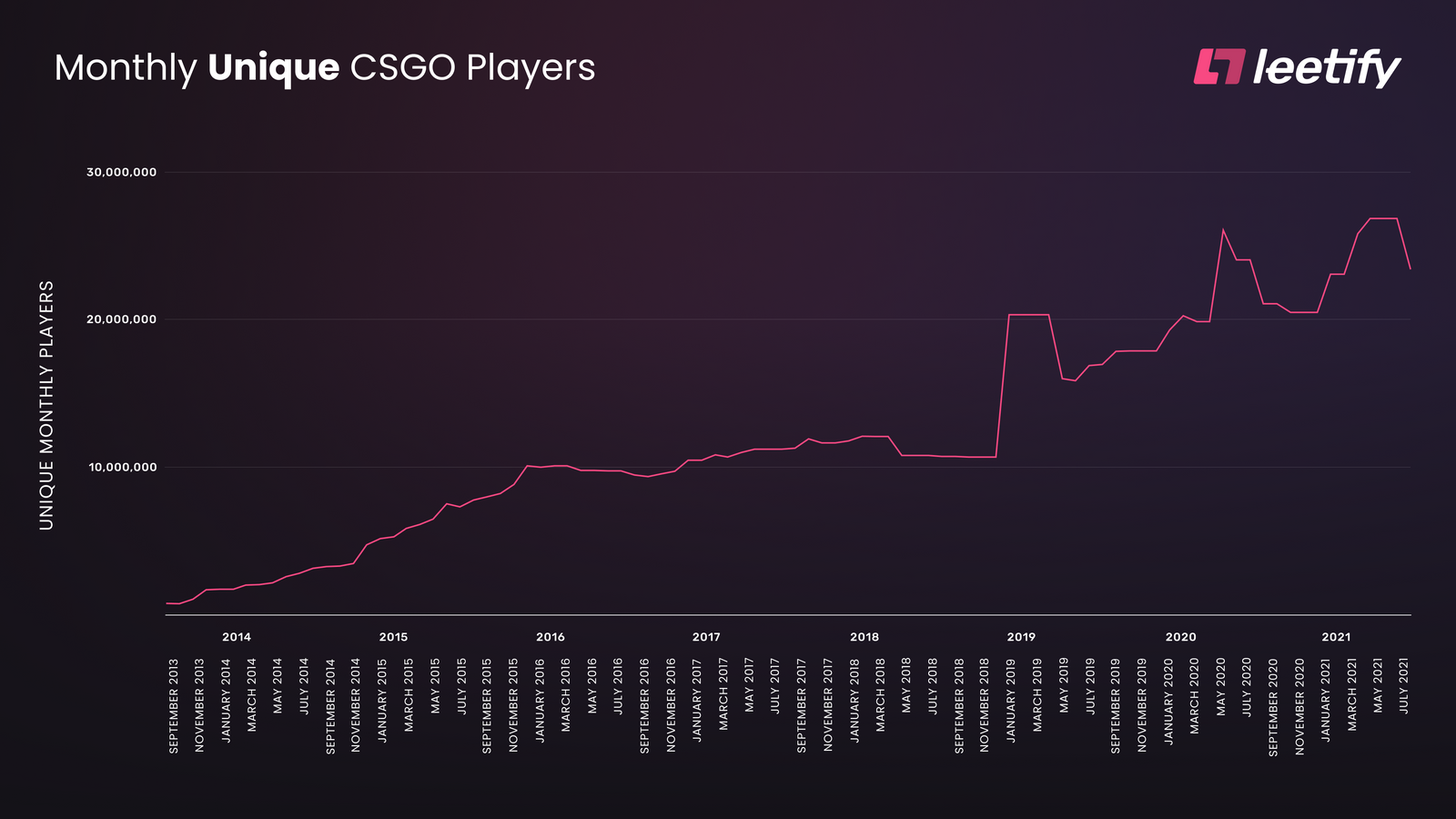
For several periods the Monthly Unique CSGO players weren’t updated which is why there are several plateaus. Interestingly, this graph shows that CSGO’s unique player peak was actually in January-March of this year, in comparison to the peak and average concurrent player peaks which were in April of 2020.
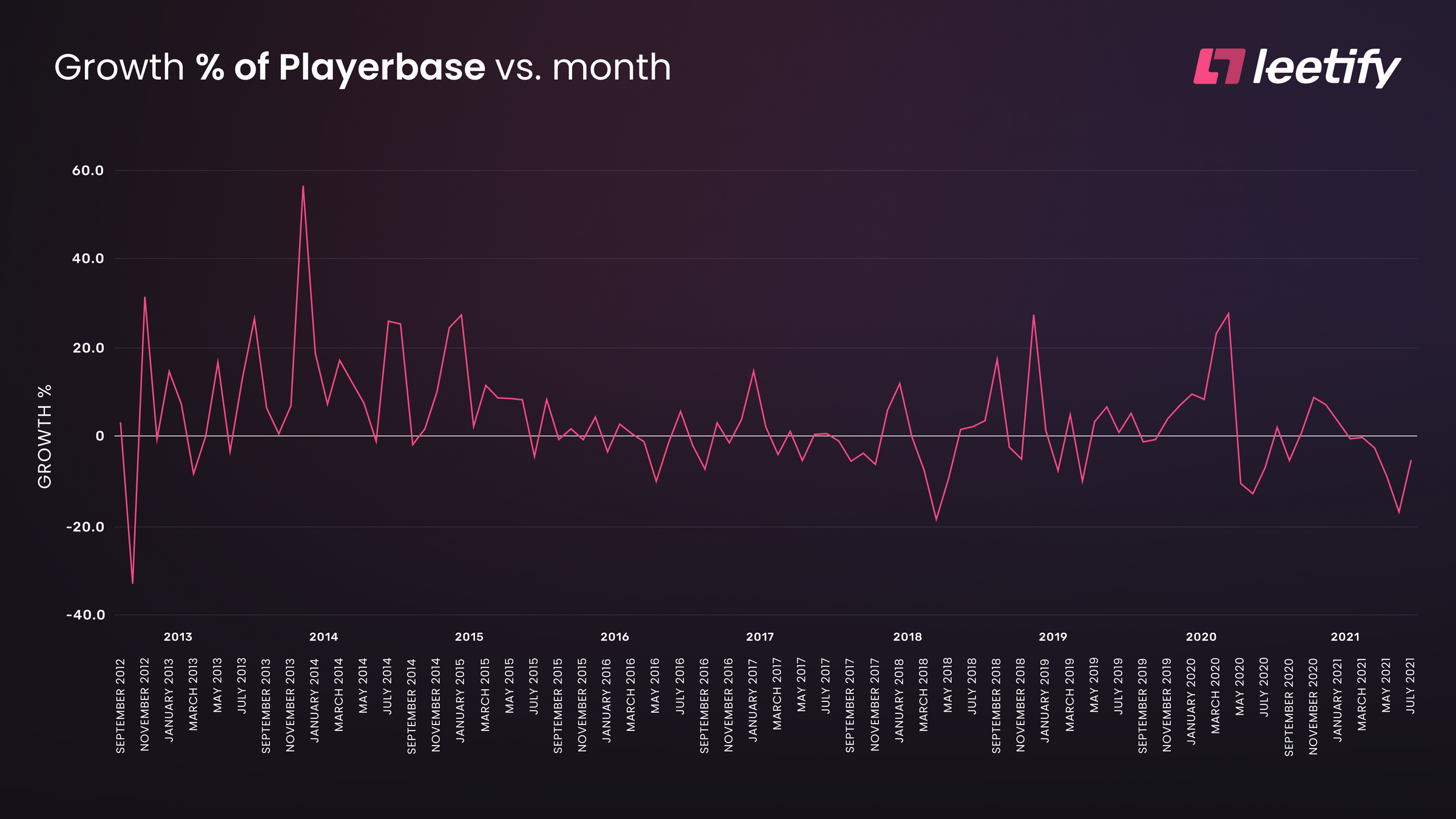
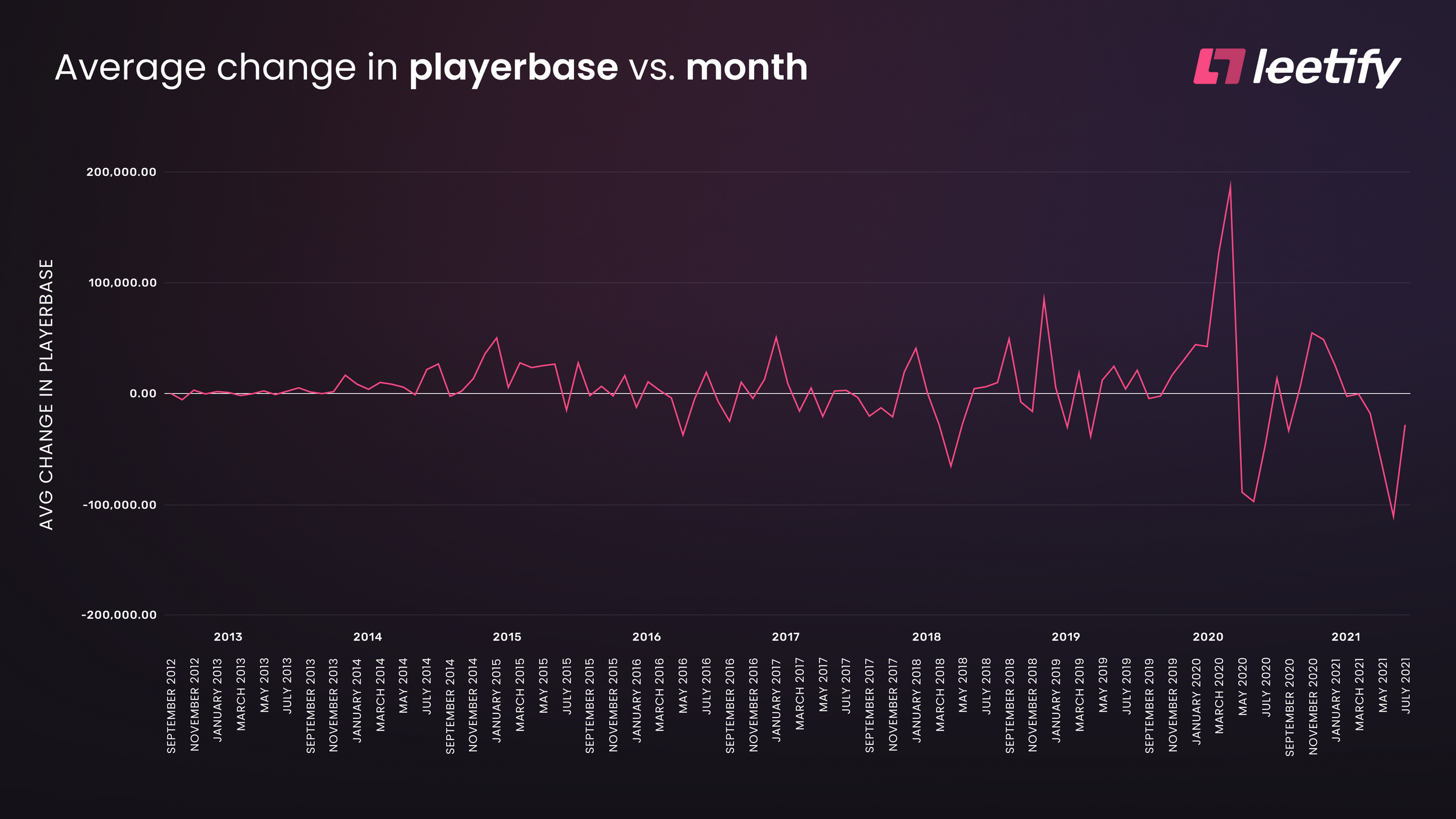
CSGO’s growth rate managed to remain significantly positive until July 2015, where we see a consistent shift between positive and negative. On both graphs, we can see the impact of CSGO becoming free to play in December 2018, an increase of 85,000 players and a growth rate of 27.5% in one month. This was the biggest growth the game had seen since January 2015, and it was only 16 months later that record was smashed again in April 2020 with an increase of 186,570 players and a 27.8% growth rate!
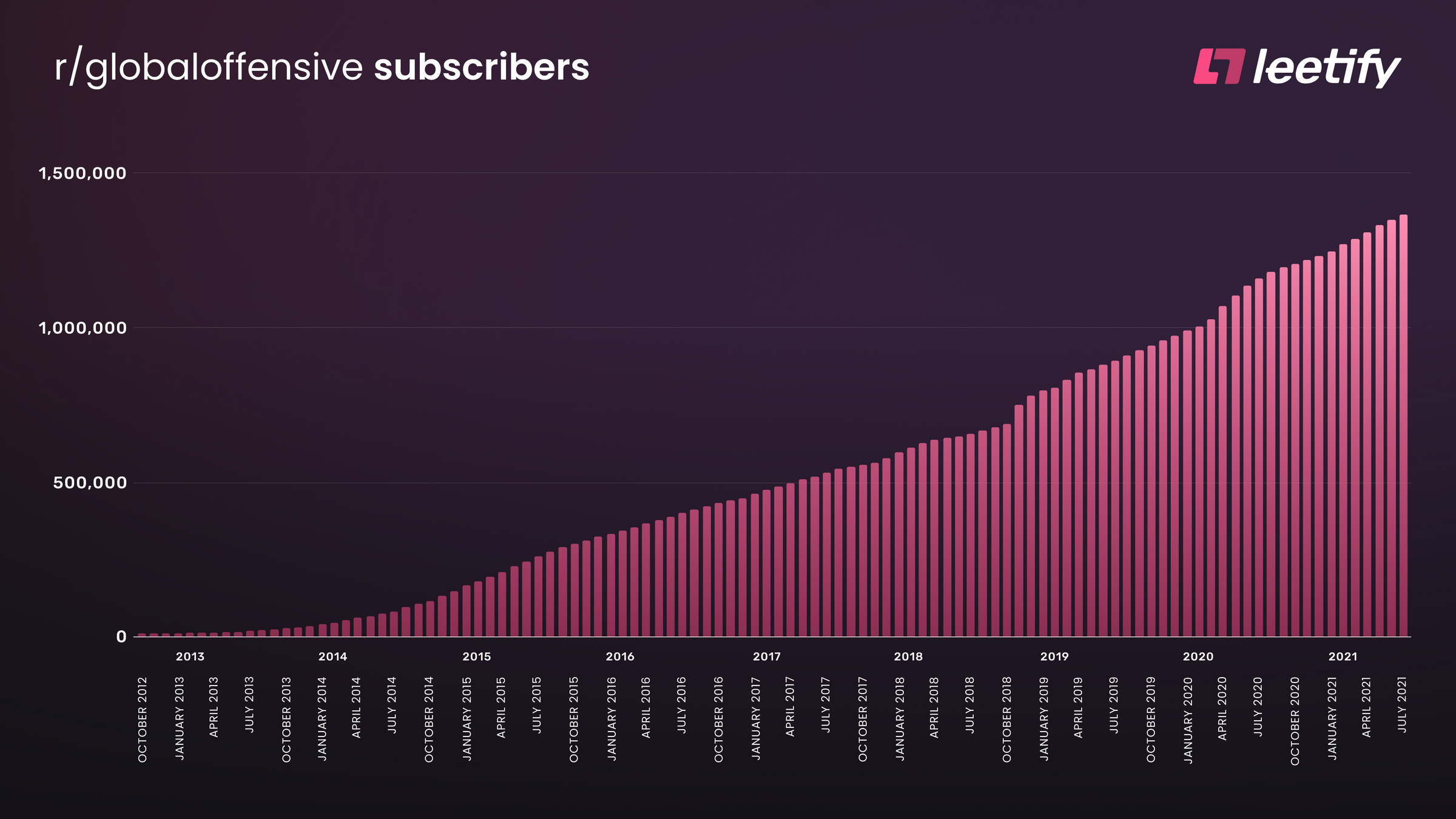
The r/GlobalOffensive subreddit is the largest dedicated to CSGO with over 1,360,000 members. After receiving huge influxes of members when the game became free to play in December 2018 and when we hit our player peak in April 2020, the subreddit has continued to consistently grow which is a great sign. This doesn't show us the quality of the subreddits posts, comments and community feel. What do you think about the current State of r/Globaloffensive?
Country Distribution of the CSGO Playerbase
One aspect of the CSGO community that interested the team at Leetify, was how many CSGO players are there per country? Also, how many CSGO players per capita are there for these countries?
To do this we looked at over 7 million unique CSGO matchmaking players which has provided us quite a large sample size to be able to answer these questions adequately. The steam API reports the (chosen) location of a player, which does introduce a potential for skew in the data set however we removed obvious troll picks and outliers in terms of country selection. In figure 1, the countries that account for 90% of the total CSGO MM playerbase are coloured according to their percentage contribution. In figure 2, the top 20 countries which account for approximately 70% of the total CSGO MM playerbase are listed in descending order from top to bottom from left to right.
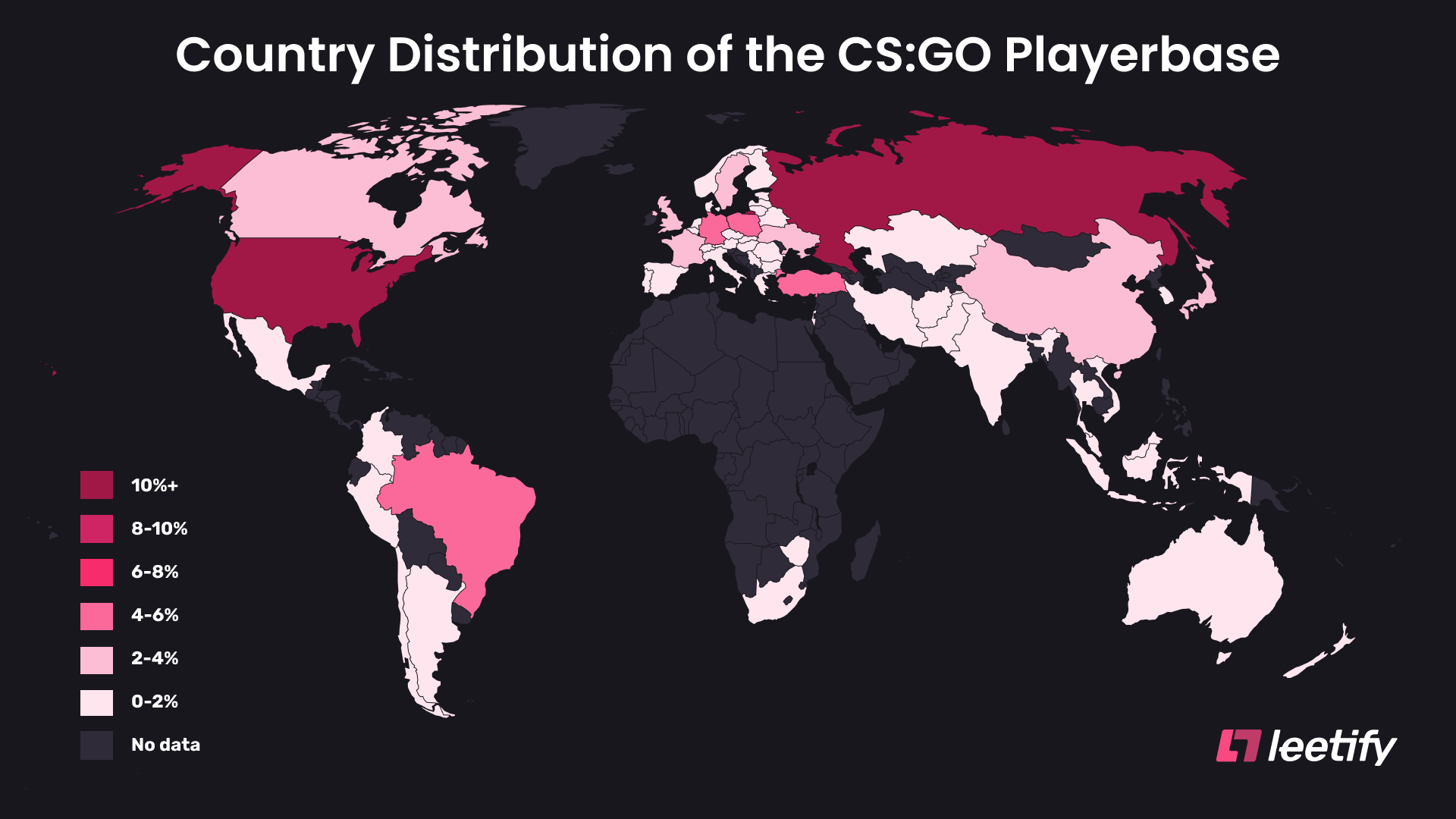
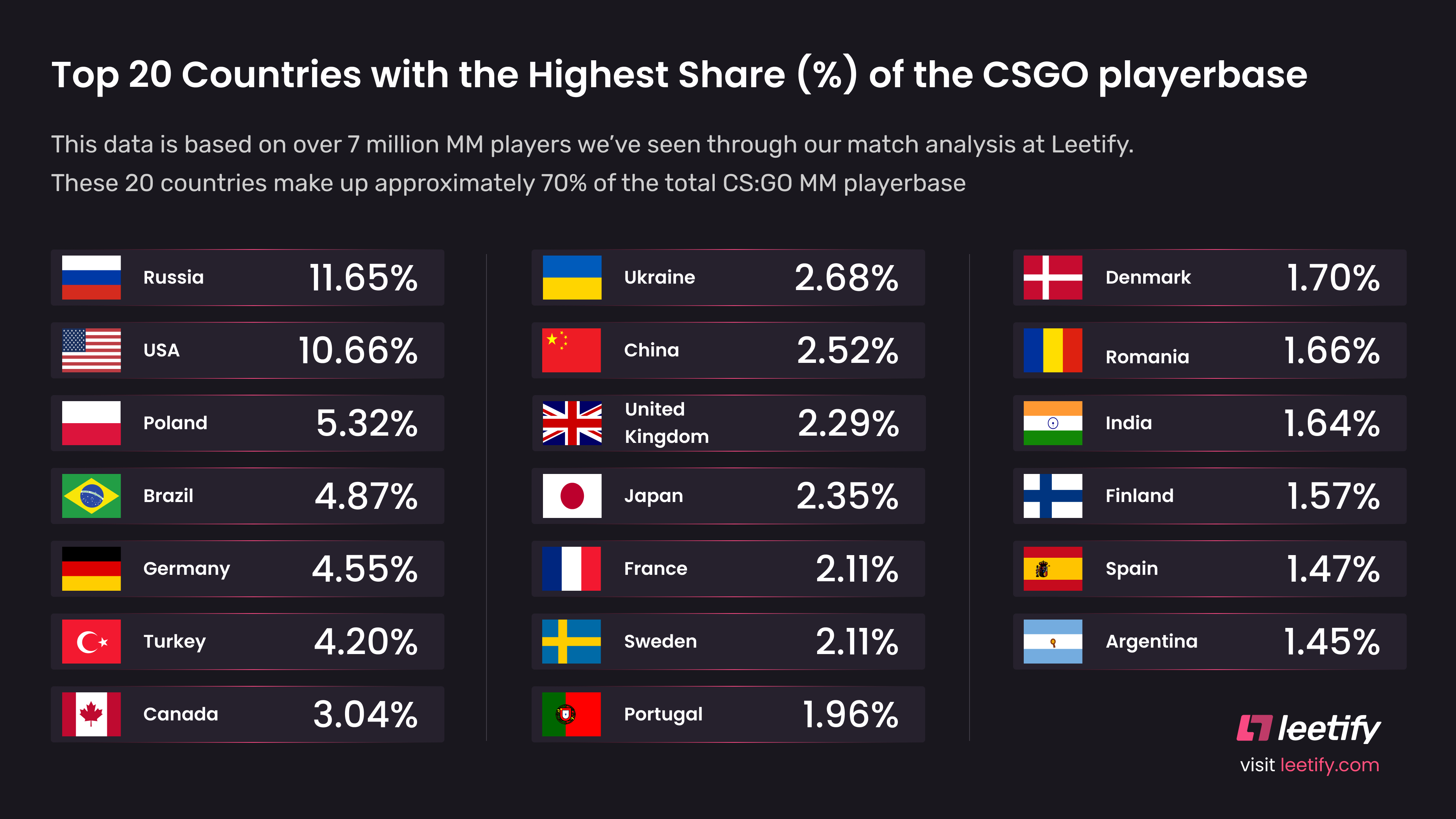
Overall, and for the most part, the countries with the largest population and access to the internet as well as computers make up 70% of the total CS:GO playerbase. However, this is merely a part of the picture, to truly answer how popular CSGO is in a country we calculated the per capita for the countries and found some unsurprising results.
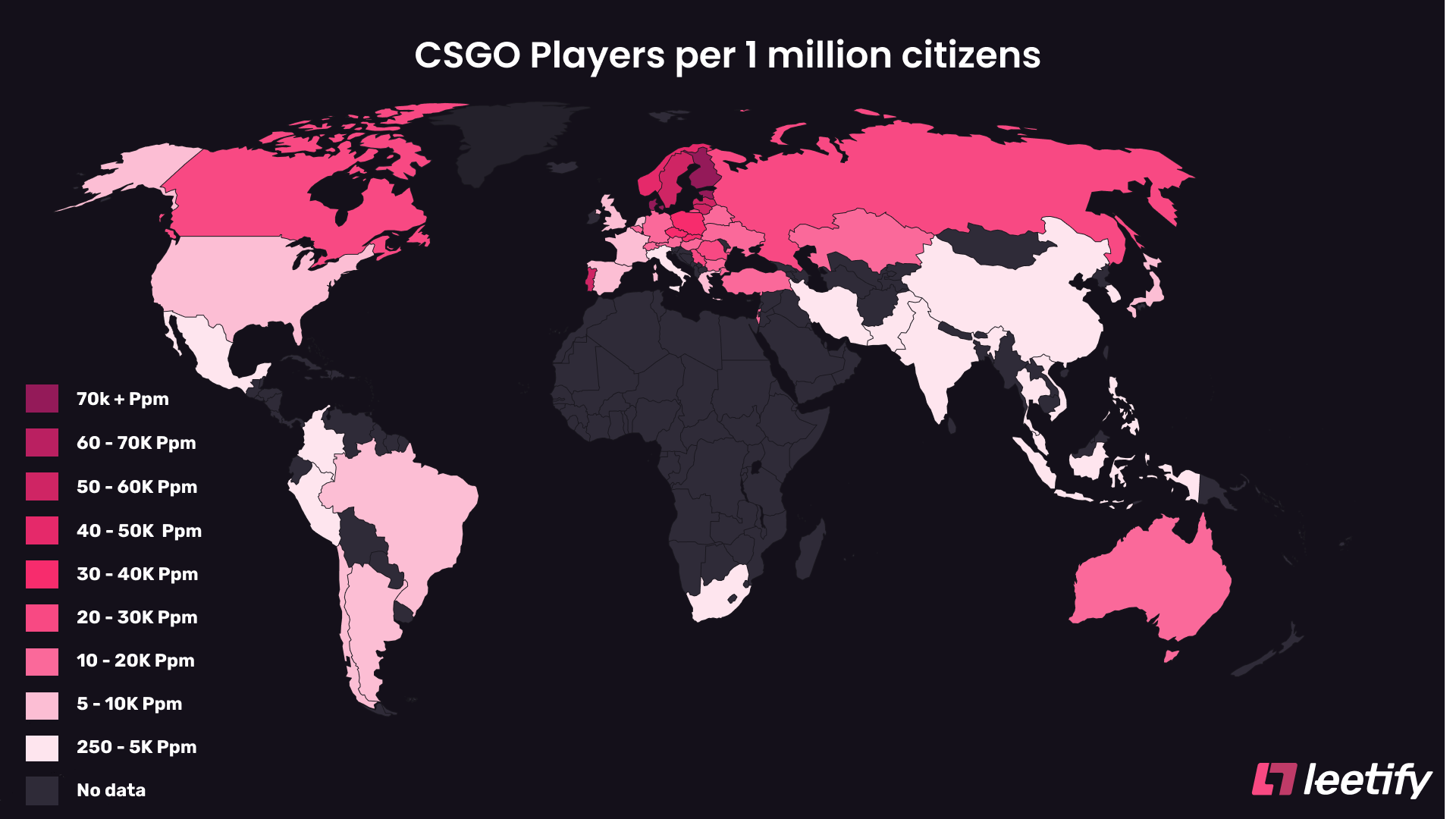

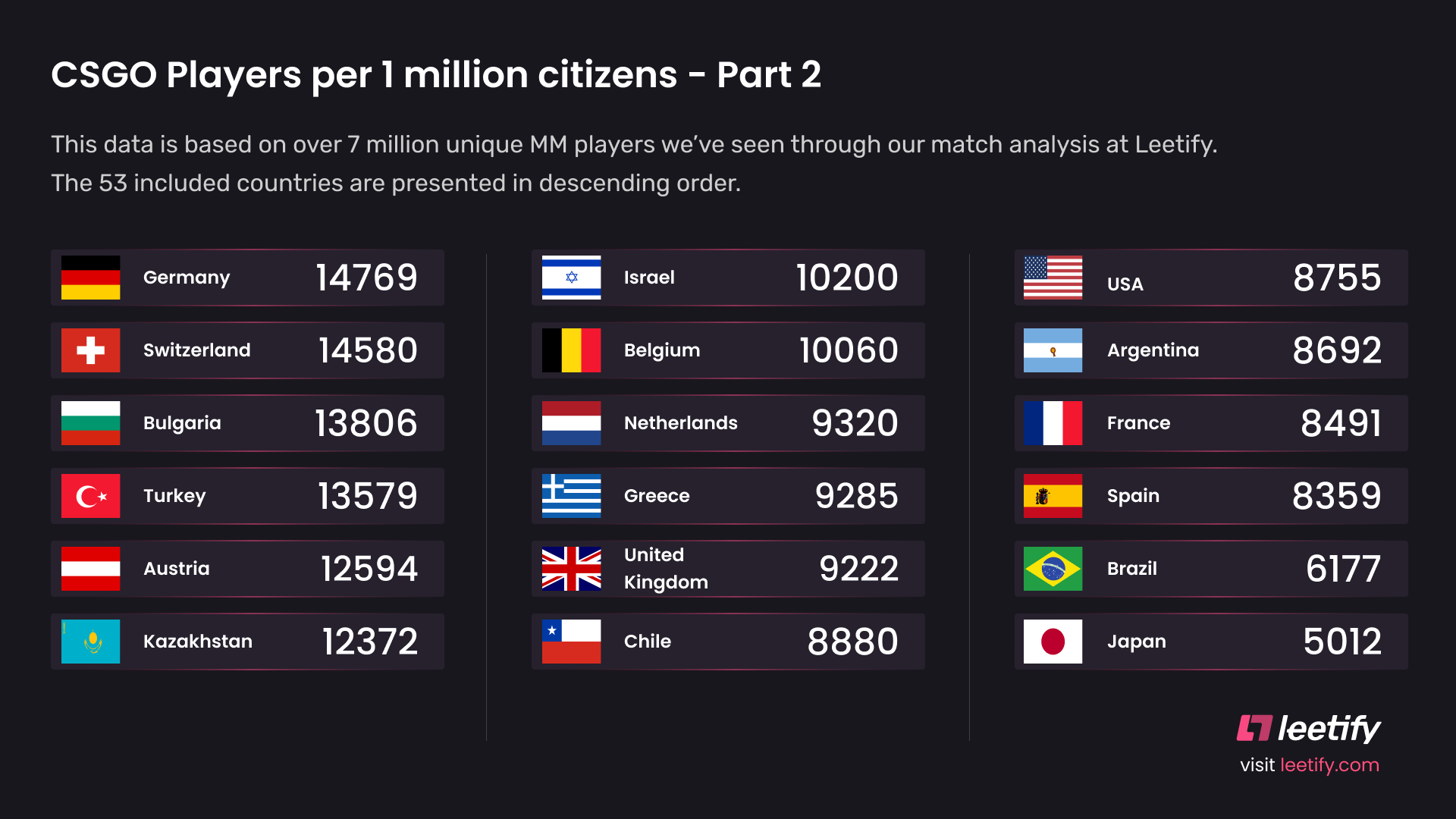
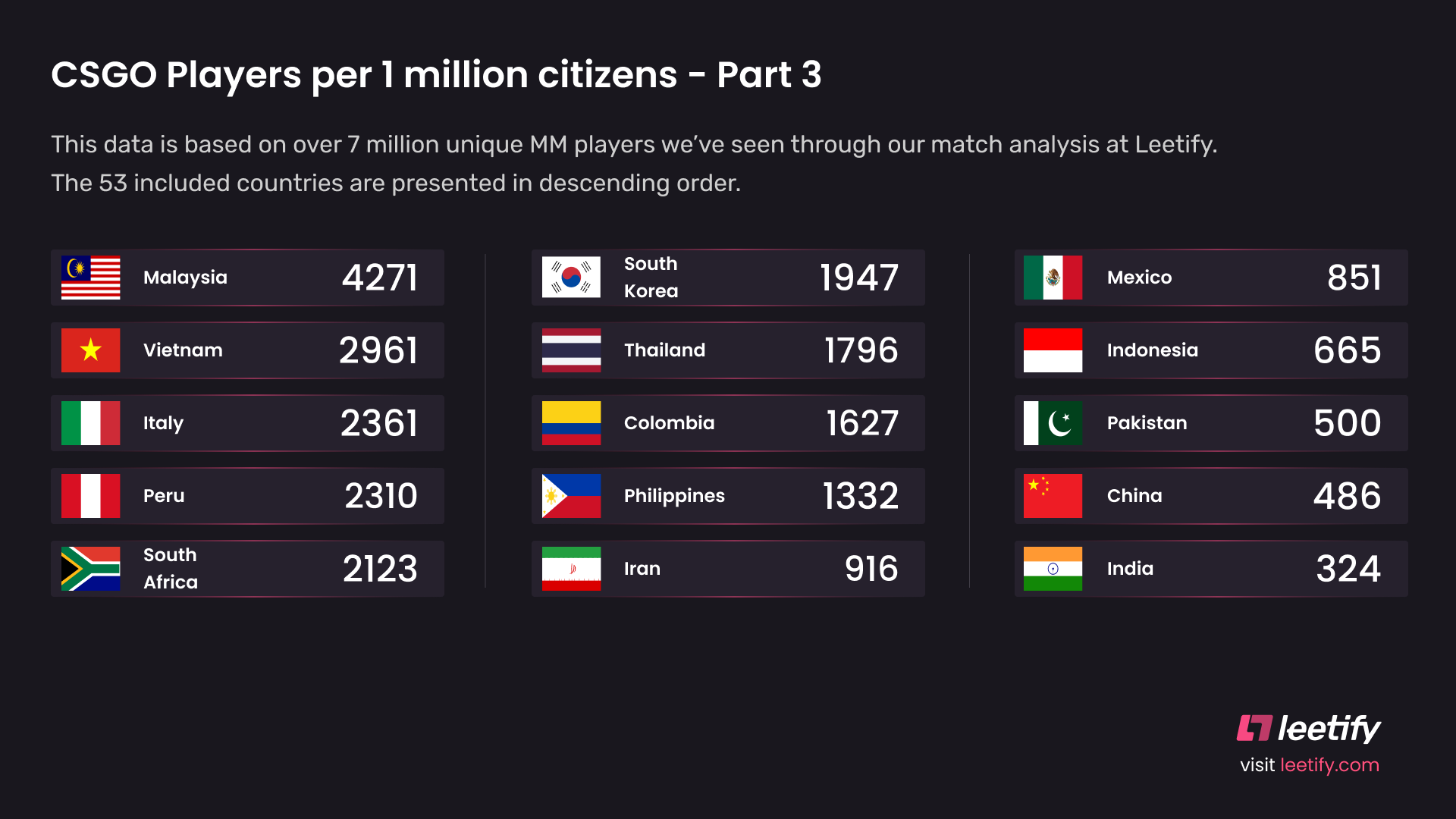
As evidenced in figures 3 through 4(a-c), Europe dominates in terms of how many CSGO players they truly have in relation to their populations. The largest countries such as the USA, China, and India pale in comparison.
Rank Distribution Among A Country's Players
We compiled several countries playerbases in the table below alongside the rank distribution of each. It is not a fully comprehensive list so if your country is missing let us know and we'll get it added.
CSGO Viewership
For the Average and Peak viewership metrics, we're using only Twitch numbers, which means that for majors it doesn’t include the GOTV viewing and it doesn’t include any other platforms such as Youtube. We decided to use this because it is the main platform for viewing CSGO Esports events and it allows us to go back to August 2015 and compare viewership from then monthly until now.
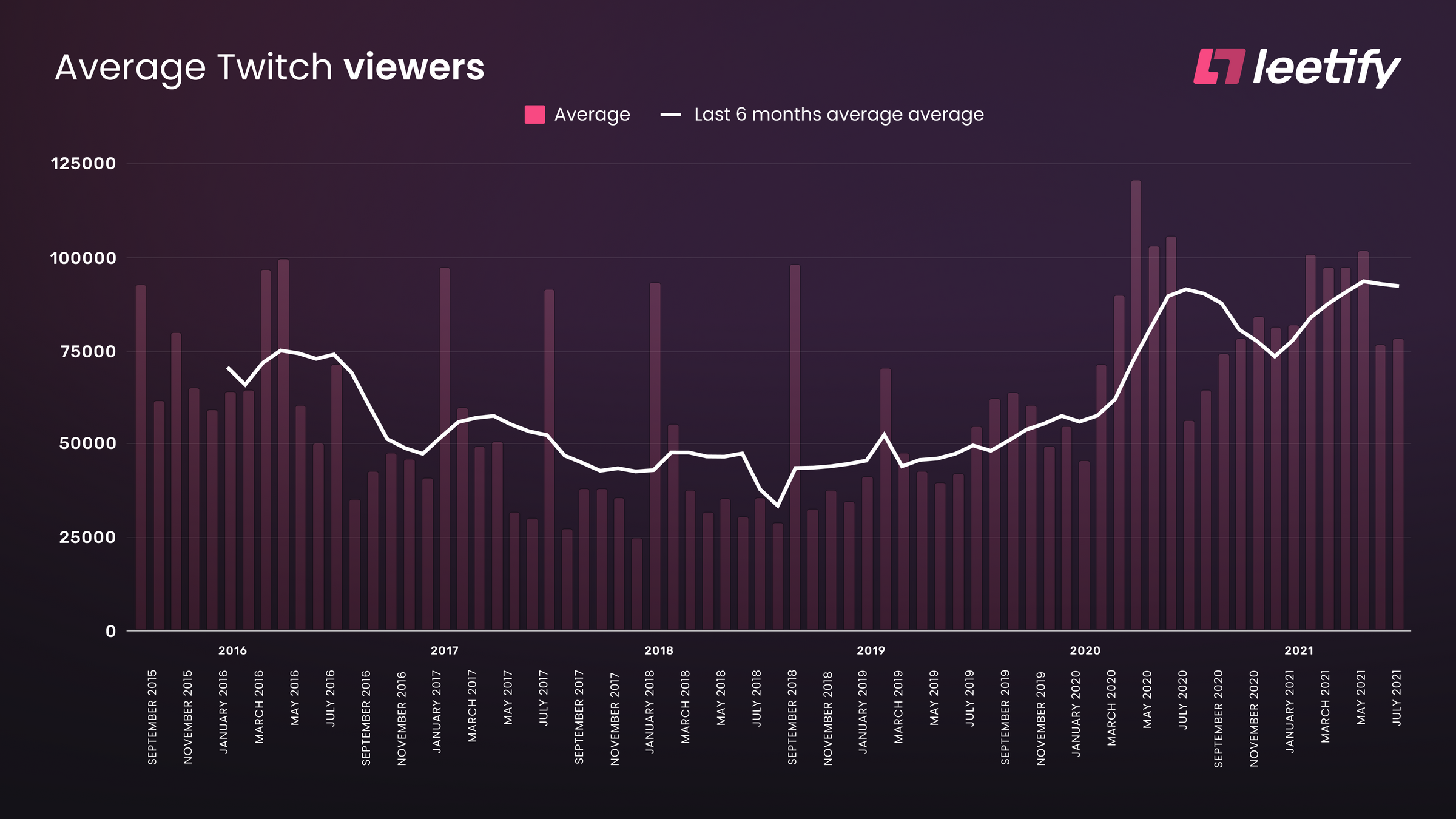
The Average viewership of CSGO Esports events has never been higher and with Youtube starting to become a popular alternative the numbers could be even higher! This increase in the average number of viewers, however, is also influenced by the change of format.
Before the online period tournaments had significant operating and venue costs for running LAN events, which is why LAN tournaments were structured to be as short as possible with short and sweet group stages leading into a single-elimination playoff bracket. Now in online formats tournament organizers have gone to the extreme when it comes to tournament length. The double-elimination 8 team group stage into a single-elimination playoffs format has become commonplace increasing each tournament's length tenfold.
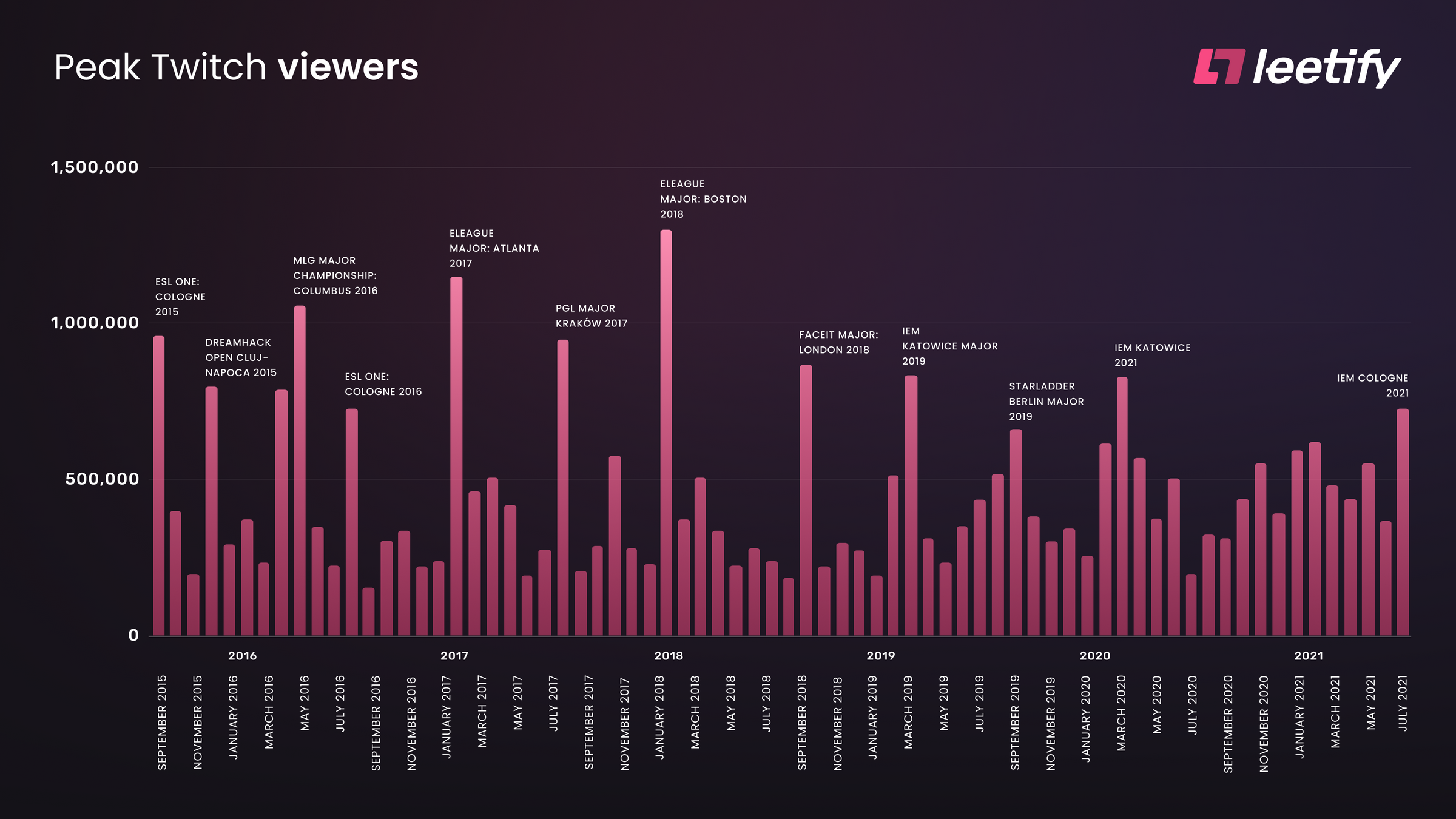
Looking at Peak Viewers we can see that the influx of new players into CSGO Esports hasn't pushed us to hit new peaks, rather it has raised the basement level upward. Whilst not having a major will have hurt peak viewership, we also think the length of tournaments and lack of time between tournaments to fully digest them has made the last year and a half of CSGO Esports blur together into a huge league of matches. This has made it significantly harder to get excited for a particular matchup or final, and why we think that having a CSGO Major in 2021 is crucial for the future of CSGO Esports.
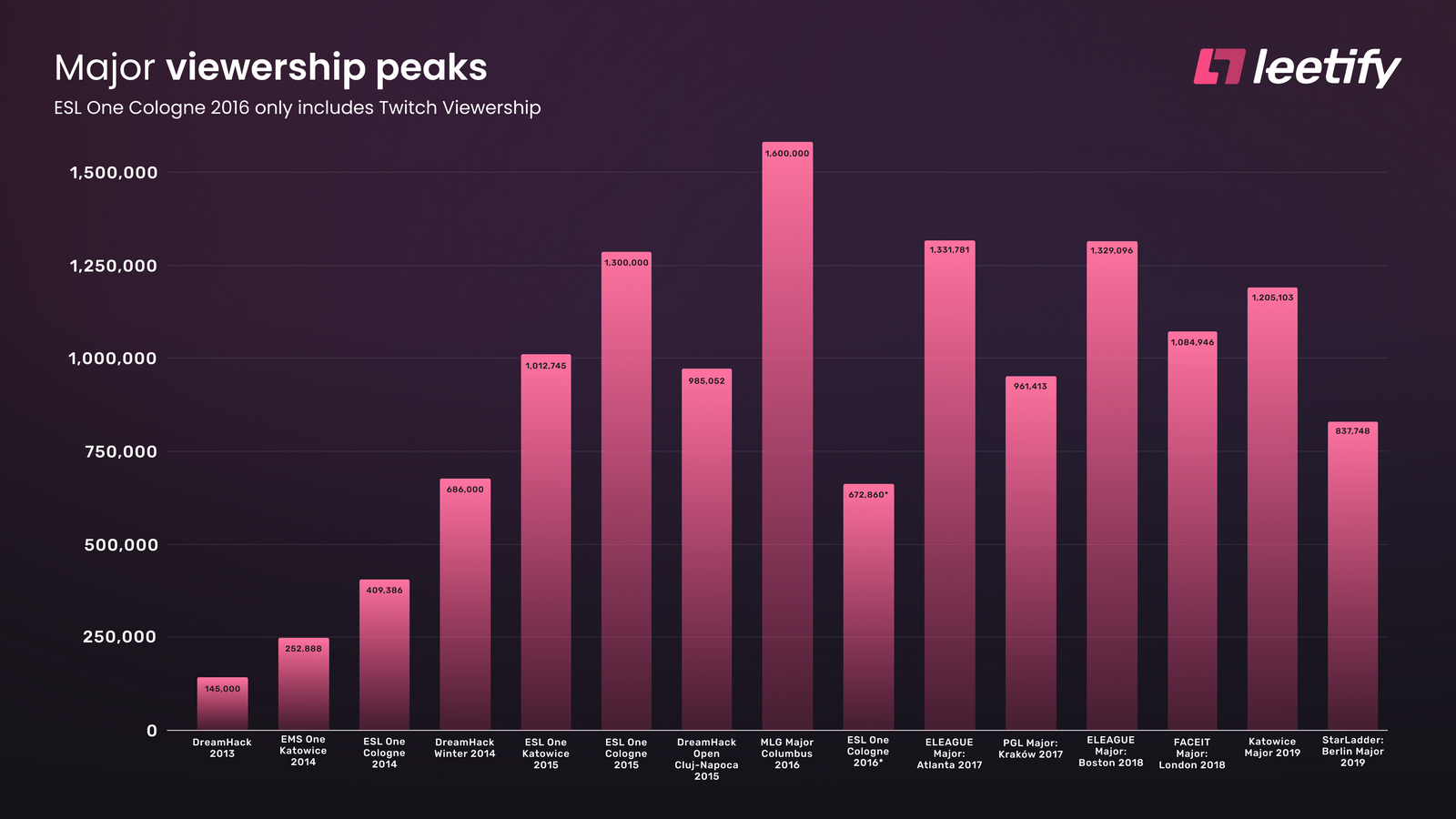
When looking at the Major viewership peaks and setting expectations for the next major's viewership we need to consider the changes to the drops system Valve made for IEM Katowice 2019. Before IEM Katowice you could connect your Twitch account to steam and get souvenir drops, some of these skins such as the dragon lore could be worth lots of money. Everyone remembers getting their mum, dad and grans computer set up to farm as many skins as possible, which itself will have been a significant draw for viewership. With the new viewership pass you no longer get dropped during matches and you can now purchase the Souvenir packages straight from Valve. This has decreased the causal fanbases incentive to watch the Majors, which is crucial for reaching high peaks.
Another issue with recent majors is the quality of matches. The top 4 major finals with the highest viewership peaks were ESL One Cologne 2015, MLG Columbus 2016, Eleague Atlanta 2017 and Eleague Boston 2018, all of which had at least 1 map go into Overtime. Whereas in the past major 3 finals, only 1 map (ENCE Train 16-11) managed to get into double digits. Having a great final for a major is crucial for its success viewership wise, however, the only way we can influence this is to change the format to reward higher quality teams. Our suggestion is adding a double-elimination format to the major playoffs, which would make it harder to reach the final insuring that the teams who made it will give us a high-quality match.
Esports Trends
(For these next few graphs take our projections with a pinch of salt, we can do a lot here at Leetify, but seeing the future is sadly not one of them)
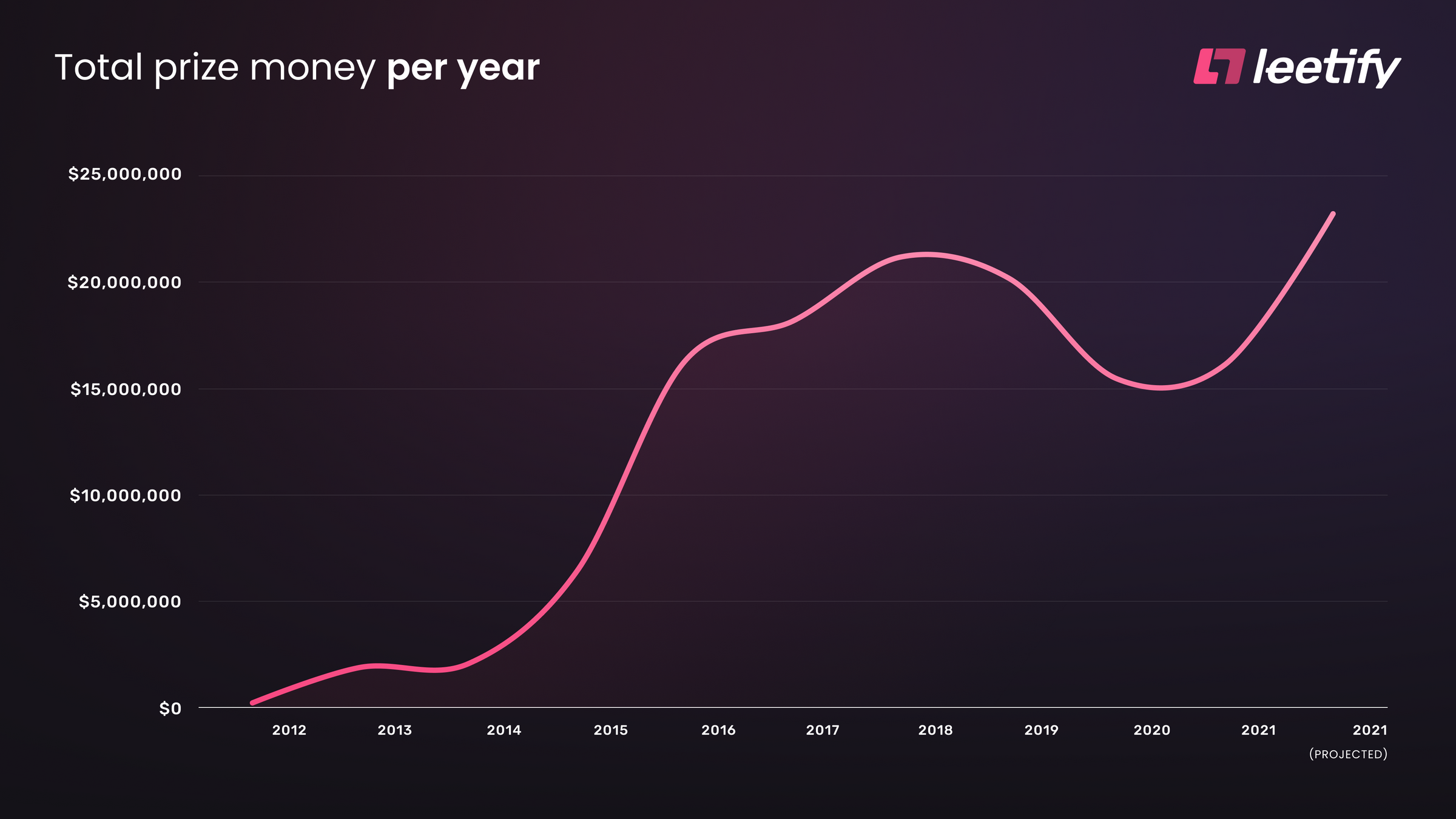
During our peak in 2017/2018 Eleague's production value, format and prize money forced competitors to level themselves up and brought CSGO Esports to new heights in terms of the viewership experience. With their focus moving to other Esports titles we have lost a significant source of prize money. With the next major prize pool now $2,000,000 for PGL Stockholm, if it goes ahead alongside other large LAN events then we will see our prize money shoot back up and possibly hit new heights!

Esports events had a unique advantage that through online play they could arrange and host tournaments meaning that a significant amount of events were able to move into Online variations. This has been great for the teams, tournament organizers and fans as we have been able to continue playing in an online format. With lockdowns easing we expect the scene to remain a mix of large LAN events combined with online leagues/tournaments for the foreseeable future.
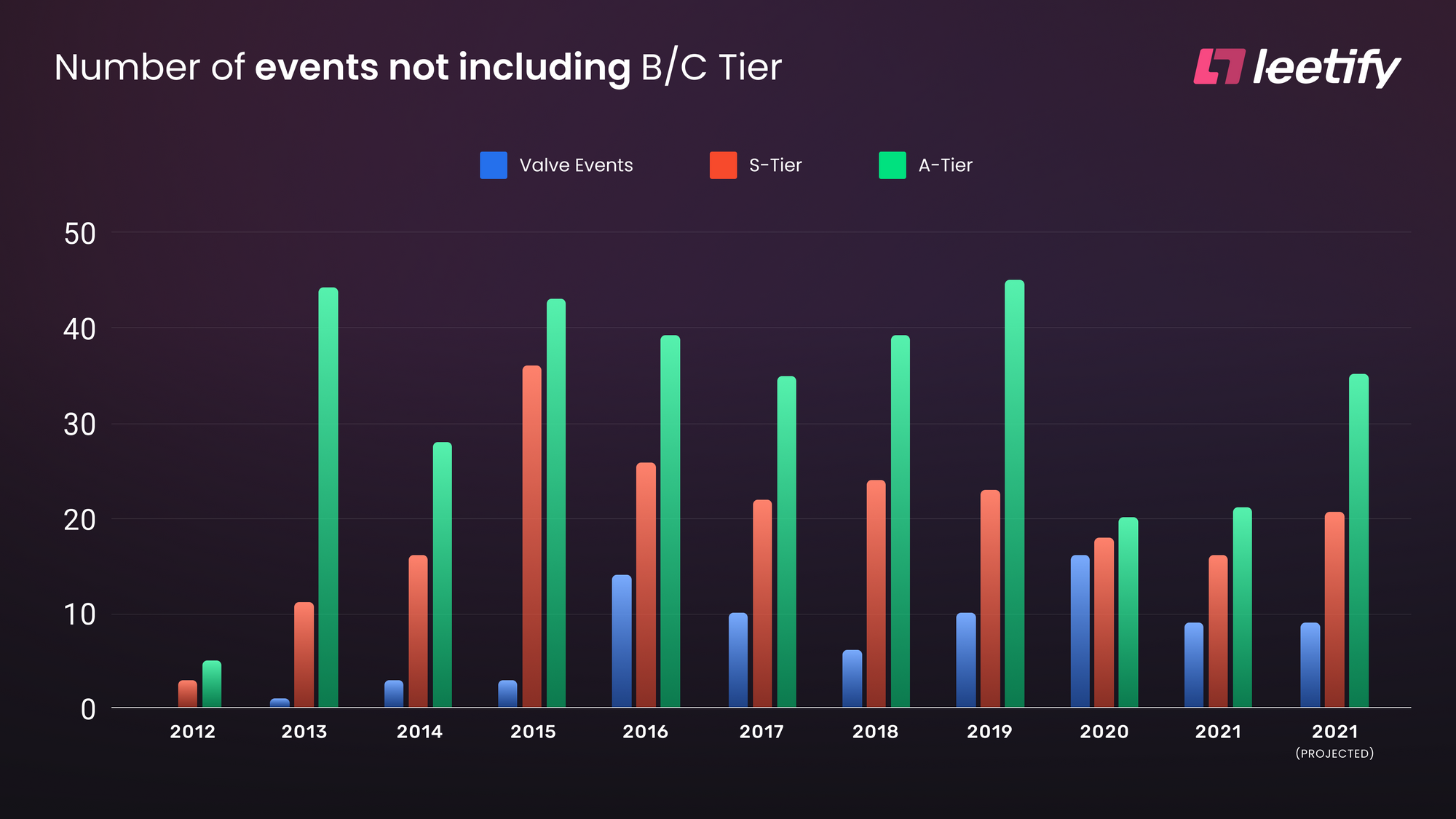
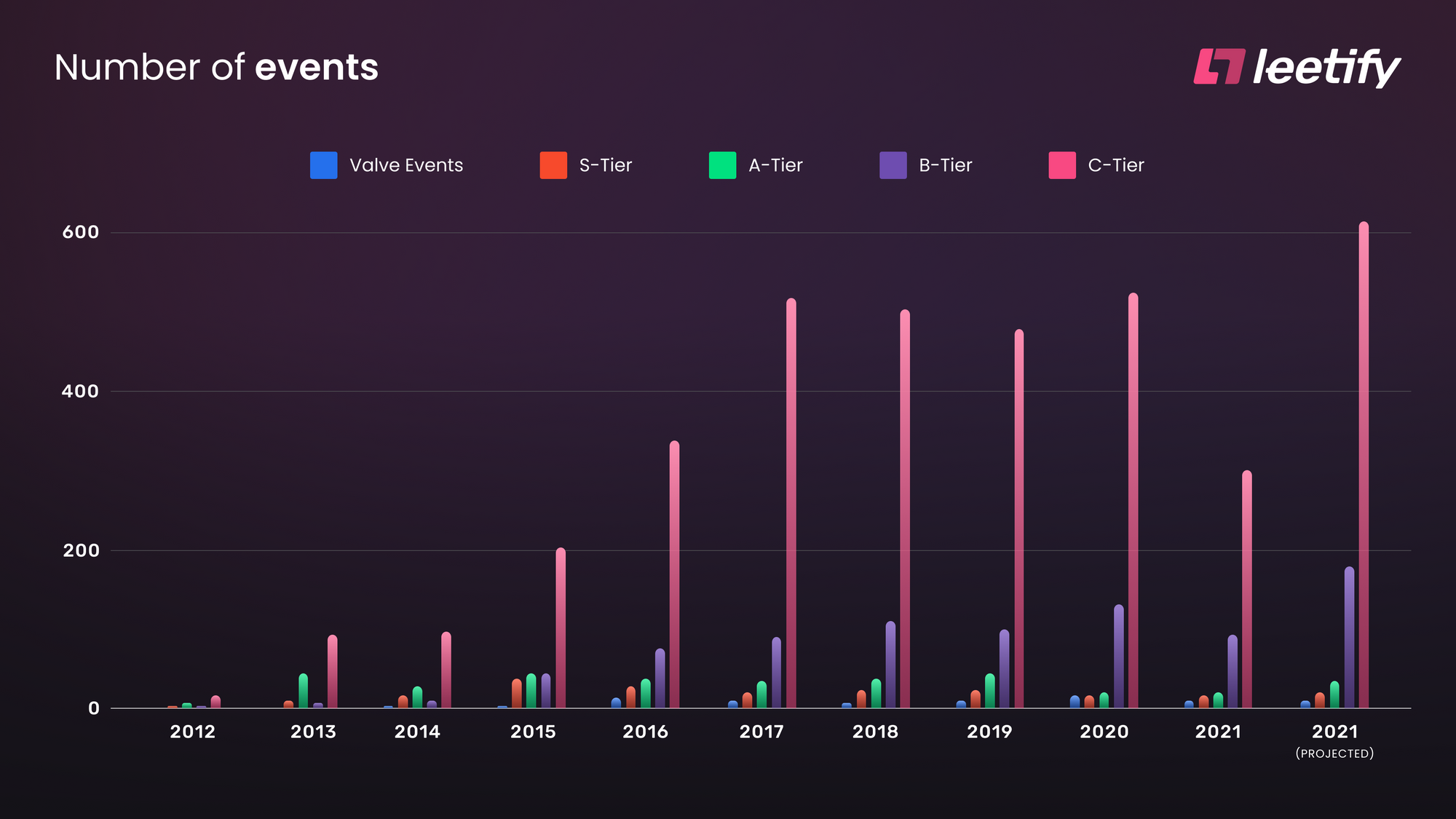
Grassroots CSGO is very much still alive with a range of B and C tier events and leagues for people of all skill levels to compete in. This differs significantly from country to country. We are going to take a look at North America and Europe to see how the Grassroots Scenes compare.
During the last 18 months, the North American scene has fallen from grace. Large amounts of investment in the form of team organisations, tournaments and players have gone to other Esports scenes. The rebuilding of the NA scene is already taking place, with initiatives such as the Mythic League, FPL and ESEA Cash Cups providing support for teams and players across the scene. It still has a long way to go to reach its former status and needs a regional league with a significant amount of investment such as the Mountain Dew League with smart and effective monetization to bring stability to the region.
Scandinavian countries in comparison to North America, even at North America's peak, has more infrastructure in their grassroots scene with leagues available for all tiers of players. Along with this league, infrastructure has come innovative ways to monetize the space which Esports leagues across the world could learn from.

In the Dust.2k League they provide Season Cards which allow viewers to donate to their favourite teams. This is split between the chosen team and to a common pool which helps support all of the teams in the league.
An exciting development we are seeing across Europe and North America is the expansion of Esports into Universities, Colleges and High Schools. At the University level, leagues such as the NUEL in the United Kingdom allow students to compete against each other in a variety of Esports games. This gives students who are pursuing an education the chance to still compete and level up their skills. Denmark has gone even further with High Schools doing Esports teaching in high schools with CSGO clubs and electives where students are taught tactics, skills and health advice to help accelerate their Esports careers.
As with most everything in the world right now, the state of CSGO is a state of uncertainty. At the same time, more than any other competitive video game, CS:GO has a long history of growth and stability - so chances are it’s not going away anytime soon. There are however both lots of opportunities for growth alongside lots of potential risks that could reduce stability in the ecosystem. What do you think should be done to ensure the long-term success of CS:GO? Join the discussion on Twitter and using #StateofCSGO and or hop onto Reddit and join the discussion on our latest post.
Sources:
https://blog.counter-strike.net/
https://steamcharts.com/app/730

